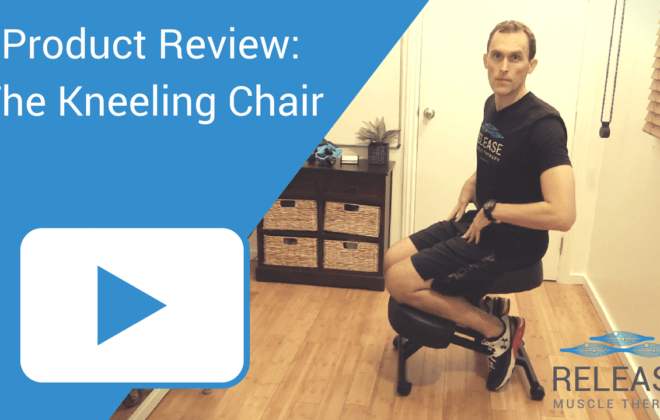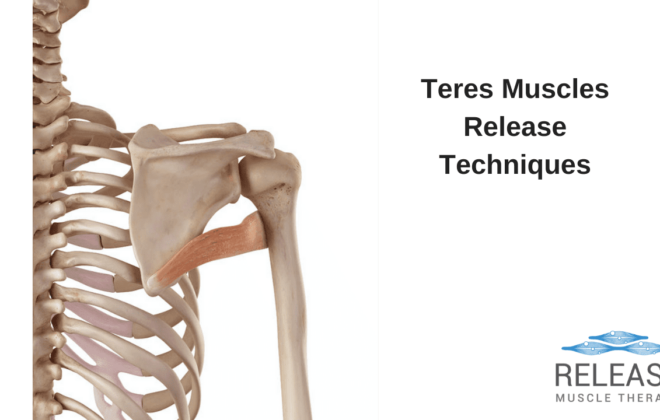Effective Techniques to Alleviate and Prevent Rhomboid Muscle Pain
Rhomboid muscle pain is a common condition that affects many people, especially those who lead sedentary lifestyles or engage in repetitive activities.
The rhomboid muscles are located in the upper back between the shoulder blades and are responsible for pulling the shoulder blades together. They also play a crucial role in maintaining proper posture and shoulder mobility.
The constant discomfort and pain in the rhomboid muscle can lead to decreased productivity, limited mobility, and even depression. That’s why it’s important to learn how to alleviate and prevent rhomboid muscle pain, which can improve your overall health and well-being.
By the end of this post, you will have the knowledge and techniques to take control of your rhomboid muscle strain, improve your mobility, and live a pain-free life. So, let’s dive in and learn how to say goodbye to rhomboid muscle pain once and for all!
Understanding Rhomboid Muscle Pain
Rhomboid muscles are a pair of muscles located in the upper back between the shoulder blades. They are diamond-shaped, which is why they are called rhomboid muscles. The rhomboid muscles play a crucial role in shoulder blade stabilization and proper posture maintenance.
The function of the rhomboid muscles is to pull the shoulder blades together, helping to maintain good posture and shoulder mobility. They are also involved in shoulder blade elevation and rotation, making them essential for proper upper body movement.
There are several common causes of painful rhomboid muscle, including poor posture, repetitive movements, heavy lifting, and trauma. Poor posture, such as slouching or hunching over a desk for extended periods, can cause rhomboid muscles, leading to pain and discomfort. When you spend long hours sitting or standing with poor posture, the rhomboid muscles become overworked, leading to tension and pain.
Repetitive movements, such as typing or carrying heavy objects, can also cause overuse of the rhomboid muscles, resulting in pain. When you perform the same movements repeatedly, such as reaching or lifting, it puts a lot of strain on the rhomboid muscles, leading to inflammation and pain.
Heavy lifting, especially when done with improper form, can cause significant rhomboid muscle strain. This can cause tight muscles to become strained, leading to pain and discomfort. When you lift heavy objects, make sure to use proper form to avoid injuring the rhomboid muscles.
Trauma, such as a car accident or fall, can also cause rhomboid muscle pain. Injuries to the upper back can cause strain on the rhomboid muscles, neck pain leading to pain and discomfort. If you have experienced trauma to the upper back, it is important to seek medical attention to prevent further complications.
Symptoms of rhomboid muscle pain can vary from person to person. Common symptoms include:
- Aching or burning pain in the upper back and shoulder blade area,
- Limited range of motion, and tightness or stiffness in the affected muscles.
- In severe cases, the pain can radiate down the arm or cause headaches.
Reasons for Rhomboid Pain Development
Rhomboid muscle pain can be caused by several factors, including poor posture, overuse and strain from certain activities, injuries and accidents, and underlying medical conditions.
Poor Posture and its Effects
Poor posture, such as slouching or hunching over a desk for extended periods, can cause strain on the rhomboid muscles, leading to pain and discomfort. When you spend long hours sitting or standing with poor posture, the rhomboid muscles become overworked, leading to tension and pain. Poor posture can also cause misalignment of the spine, leading to additional strain on the rhomboid muscles and other muscles in the upper back.
Overuse and Strain from Certain Activities
Repetitive movements, such as typing or carrying heavy objects, can also cause overuse of the rhomboid muscles, resulting in pain. When you perform the same movements repeatedly, such as reaching or lifting, it puts a lot of strain on the rhomboid muscles, leading to inflammation and pain. Heavy lifting, especially when done with improper form, can also cause significant strain on the rhomboid muscles.
Injuries and Accidents
Trauma, such as a car accident or fall, can also cause rhomboid muscle pain. Injuries to the upper back can cause strain on the rhomboid muscles, leading to pain and discomfort. If you have experienced trauma to the upper back, it is important to seek medical attention to prevent further complications.
Underlying Medical Conditions
In some cases, rhomboid muscle pain may be a symptom of an underlying medical condition. For example, arthritis or fibromyalgia can cause pain and inflammation in the muscles and joints, including the rhomboid muscles. Spinal conditions such as cervical herniated discs or spinal stenosis can also cause pain in the upper back, including the rhomboid muscles.
Early intervention can prevent further complications and help you manage the pain more effectively. Let’s have a look at some of the recommended exercises and stretches for rhomboid pain relief.
Exercises and Stretches for Rhomboid Pain Relief
Rhomboid muscle pain can be debilitating, but there are exercises and stretches you can do to alleviate the pain and prevent it from happening again. Here are some effective exercises and stretches for rhomboid pain relief:
Scapular Retraction:
Scapular retraction is an exercise that strengthens the muscles between your shoulder blades and improves your posture. To perform this exercise:
- Stand or sit with your arms at your sides and your shoulders relaxed.
- Squeeze your shoulder blades together, pulling them back and down towards your spine.
- Hold for 5-10 seconds, then release.
- Repeat for 3 sets of 10 repetitions.
Doorway Stretch:
https://www.youtube.com/watch?v=rT7rgXQtDcI
The doorway stretch is an effective stretch to relieve tension in the rhomboid muscles. To perform this stretch:
- Stand in a doorway with your arms outstretched and your palms on the door frame.
- Lean forward until you feel a stretch in your chest and shoulders.
- Hold for 20-30 seconds, then release.
- Repeat 3-5 times.
Neck Retraction Exercise:
The neck retraction exercise strengthens the muscles in the back of your neck and improves your posture. To perform this exercise:
- Sit or stand with your shoulders relaxed and your head in a neutral position.
- Slowly tuck your chin towards your chest, keeping your eyes level.
- Hold for 5-10 seconds, then release.
- Repeat for 3 sets of 10 repetitions.
Child’s Pose:
The Child’s Pose stretch is an effective way to stretch the muscles in your upper back, including the rhomboids. To perform this stretch:
- Start on your hands and knees with your hands shoulder-width apart.
- Lower your hips back towards your heels while reaching your arms out in front of you.
- Rest your forehead on the floor and relax your shoulders.
- Hold for 30 seconds to 1 minute, then release.
Foam Rolling:
Foam rolling is a great way to relieve tension and soreness in the rhomboid muscles. To foam roll your rhomboids:
- Lie on your back with a foam roller placed horizontally between your shoulder blades.
- Place your hands behind your head to support your neck.
- Roll up and down along your upper back, focusing on any areas of tightness or pain.
- Continue rolling for 1-2 minutes, release and come back to your starting position.
Incorporating these exercises and stretches into your daily routine can help alleviate rhomboid muscle pain and prevent it from happening again in the future. Remember to always listen to your body, take frequent breaks and stop any exercise or stretch if you experience pain or discomfort.
Preventive Measures for Rhomboid Muscle Pain
Rhomboid muscle pain can be prevented by taking proactive measures to maintain good posture and prevent muscle strain. Here are some effective preventive measures for rhomboid strain and shoulder pain:
Maintaining Proper Posture
Maintaining good posture is crucial for preventing rhomboid muscle pain. To maintain proper posture:
- Sit with your back straight and your shoulders relaxed.
- Keep your feet flat on the ground.
- Use a lumbar support pillow if needed to avoid breaking your rib cage.
- Avoid slouching or leaning forward.
Regular Exercise and Stretching
Regular exercise and stretching can help keep your muscles healthy and prevent muscle strain. Here are some exercises and stretches that can help:
- Scapular retraction exercise
- Doorway stretch
- Neck retraction exercise
- Child’s pose
- Shoulder rolls
- Upper back stretch
Ergonomic Workspace Setup
Setting up an ergonomic workspace can help prevent muscle strain and reduce the risk of rhomboid muscle pain. Here are some tips:
- Adjust your chair and desk to the right height reaching your lower neck.
- Use an ergonomic keyboard and mouse.
- Place your computer screen at eye level.
- Take frequent breaks and move around every 30 minutes.
Taking Breaks and Avoiding Excessive Strain
Taking regular breaks and avoiding excessive strain can help prevent muscle fatigue and reduce the risk of rhomboid muscle pain. Here are some tips:
- Take regular breaks to stand up and stretch.
- Avoid sitting or standing in the same position for long periods of time.
- Avoid lifting heavy objects without proper form.
- Use proper body mechanics when performing physical activities to avoid more serious injury.
Incorporating these preventive measures into your daily routine can help reduce the risk of developing rhomboid muscle pain and shoulder blade pain. Remember to listen to your body and seek medical attention if you experience any persistent or severe pain.
Frequently Asked Questions
1. What is the best way to sleep with rhomboid muscle pain?
Finding a comfortable sleeping position can be challenging when experiencing rhomboid muscle pain or upper back pain. Here are some tips to help you sleep more comfortably:
- Sleep on your back with a pillow under your knees to reduce pressure on your back.
- Use a pillow to support your head, neck and rib cage.
- Avoid sleeping on your stomach as this can cause strain on your neck and back muscles.
- Consider using a supportive mattress and pillows.
2. How long does it take for rhomboid muscle pain to heal?
The healing time for rhomboid muscle pain or shoulder pain can vary depending on the severity of the muscle injury and the underlying cause of the pain. Generally, mild to moderate rhomboid muscle pain can take several days to a few weeks to heal. Severe pain or injuries may take several weeks to several months to heal. Proper rest, stretching, and exercise can help speed up the healing process or give you instant relief.
3. Can rhomboid muscle pain cause headaches?
Yes, rhomboid muscle pain can cause headaches. When the rhomboid muscles become tight and painful, they can cause tension in the neck and shoulders, leading to tension headaches. Headaches caused by rhomboid muscle pain are usually felt in the back of the head and neck. Proper stretching and exercise can help relieve tension in these muscles and reduce the frequency of tension headaches.
4. When should I see a doctor for my rhomboid pain?
If your rhomboid muscle pain is severe, persistent, or accompanied by other symptoms such as numbness, tingling, or weakness, you should seek medical attention for physical therapy. You should also see a doctor if your pain is caused by an injury, such as a fall or car accident. Additionally, if your pain is affecting your daily activities or is not improving with home treatment, it is important to consult with a physical therapist to determine the underlying cause of your pain and receive proper treatment.
Conclusion:
Rhomboid muscle pain can be a frustrating and debilitating condition, but it doesn’t have to control your life. By understanding the causes and symptoms of rhomboid muscle pain, you can take proactive steps to alleviate nerve pain and prevent future episodes.
We’ve covered a range of effective techniques in this article, from exercises and stretches to preventive measures, that can help you manage your pain, loosen tight muscles and live a healthier, more active life.
Don’t wait until your Myofascial pain syndrome becomes unbearable before seeking help. Take action today by implementing these strengthening exercises and preventive measures.
Remember, if your pain persists or worsens, it’s essential to consult with a healthcare professional to determine the underlying cause and receive proper treatment.
By taking care of your rhomboid muscles, you can improve your overall health and well-being, and enjoy a pain-free life.
Sam Visnic
Most Popular Posts
Categories
- Deep Gluteal Pain Syndrome (8)
- Deltoids (2)
- Foam Rolling (2)
- Glutes (9)
- Hamstrings (5)
- Hypnosis for Pain (3)
- Lats (2)
- Levator Scapulae (4)
- Lifestyle (8)
- Massage Therapy (39)
- Mobility (21)
- Movement and Exercise (19)
- Muscles (22)
- Nutrition (2)
- Obliques (1)
- Pain (25)
- Pectorals (3)
- Piriformis (3)
- Plantar Fasciitis (11)
- Psoas (11)
- Quadratus Lumborum (3)
- Quadriceps (2)
- Rhomboids (3)
- Sciatica (1)
- Serratus Anterior (1)
- SI Joint (14)
- Sternocleidomastoid (1)
- Stretching (18)
- Subscapularis (1)
- TMJ (2)
- Trapezius (1)
- Uncategorized (12)










